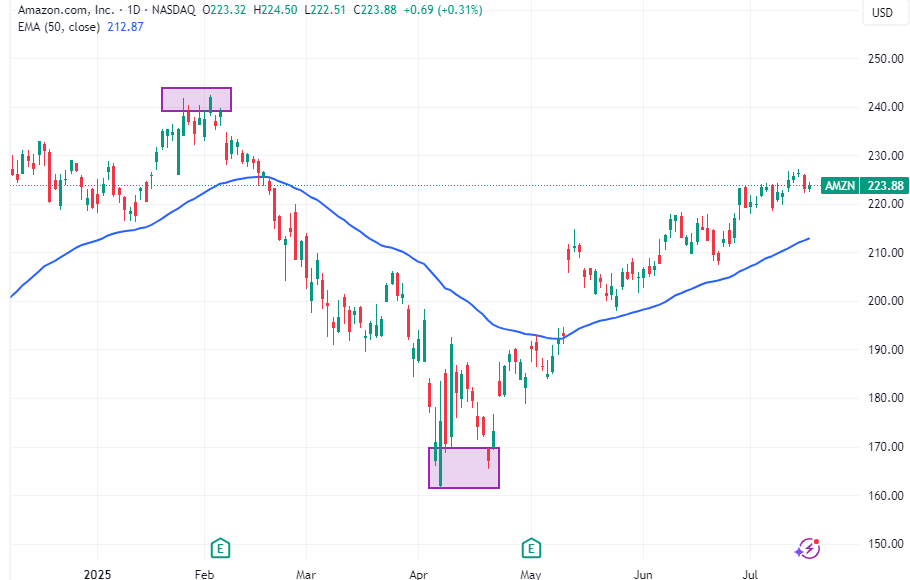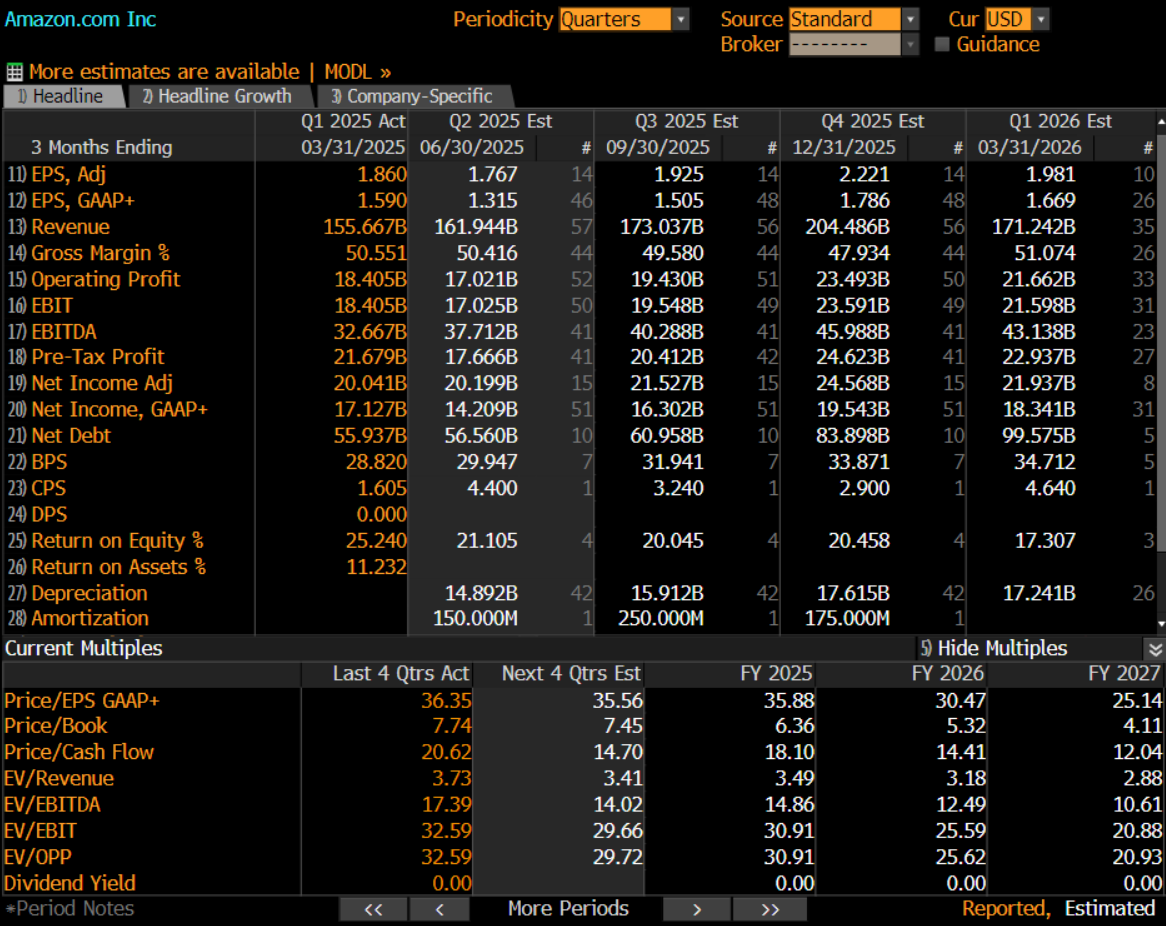- English
- عربي
Amazon Q2 2025 Earnings Preview – Can Cloud Momentum Sustain the Rally?


A Core Portfolio Holding
Amazon shares have rallied nearly 40% from their April lows, now trading just about 8% below all-time highs. This optimism reflects broad economic resilience and, more crucially, the growing momentum in AWS’s AI-powered cloud services along with retail and logistics growth following recent efficiency gains. However, with the stock trading at 36x forward earnings, expectations are running high, and the Q2 report will need to impress to justify further upside.
Options Market Signals High Volatility
Amazon’s options are currently pricing in an implied ±6.5% move on earnings day, slightly below the ±7.3% average seen across the past eight quarters. This level of expected volatility creates a setup for traders, but also calls for caution around existing positions.
Key Numbers for Investors
Analysts are forecasting record Q2 revenue of $161.94 billion, underpinned by continued AWS growth and expanding retail volumes. The broader fundamental snapshot includes:
- Adjusted EPS: $1.77
- Adjusted Net Income: $20.19 billion
- Gross Margin: 50.4%
- Q3 2025 Revenue Guidance (expected): $173.04 billion
- Forward P/E (FY2025): 35.6

AWS Momentum vs Cost Pressures
While AWS accounts for just 16% of total revenue, its 17% YoY growth in Q2 is expected to act as a buffer against rising costs in retail, especially labor and logistics. However, increased capex on data center expansion could weigh on AWS margins. Hence, investors will be closely watching operating margin trends within this segment.
Impact of Advertising and Marketing Campaigns
June’s promotional efforts are estimated to have lifted Q2 retail sales by +5%, while digital advertising revenue grew by roughly +12% QoQ. Continued strength here could help Amazon diversify away from core retail sales, though it also introduces exposure to corporate ad budget cycles which could turn volatile in the event of economic slowdown.
Valuation vs Peers
At a forward P/E of ~36x, Amazon trades at a notable premium to e-commerce peers like eBay (~22x) and aligns more closely with large-cap tech giants. Justifying this valuation will hinge on Amazon’s ability to monetize AI innovation and pass operating costs downstream to end-users. The company is supported by a strong history of exceeding expectations and the track record could justify optimism among investors, yet cost controls will still be watched closely and how it can be passed to consumers.
Potential Risks
Amazon’s international footprint leaves it vulnerable to FX headwinds, particularly amid macro-driven currency fluctuations. Net debt rose to $56.6 billion by the end of Q2, though this is partially offset by the company’s projected $35+ billion in free cash flow generation for the year. This figure helps ease any concerns around capital structure.
To sum up, Amazon’s earnings story remains anchored by AWS strength and an increasingly diversified revenue base across retail and advertising. But with elevated expectations already baked into the price, the Q2 report will need to deliver solid growth, healthy margins and upbeat guidance to maintain bullish momentum. The anticipated volatility around the print will likely make Amazon a focal point for earnings season traders scouting high-conviction opportunities.
The material provided here has not been prepared in accordance with legal requirements designed to promote the independence of investment research and as such is considered to be a marketing communication. Whilst it is not subject to any prohibition on dealing ahead of the dissemination of investment research we will not seek to take any advantage before providing it to our clients.
Pepperstone doesn’t represent that the material provided here is accurate, current or complete, and therefore shouldn’t be relied upon as such. The information, whether from a third party or not, isn’t to be considered as a recommendation; or an offer to buy or sell; or the solicitation of an offer to buy or sell any security, financial product or instrument; or to participate in any particular trading strategy. It does not take into account readers’ financial situation or investment objectives. We advise any readers of this content to seek their own advice. Without the approval of Pepperstone, reproduction or redistribution of this information isn’t permitted.